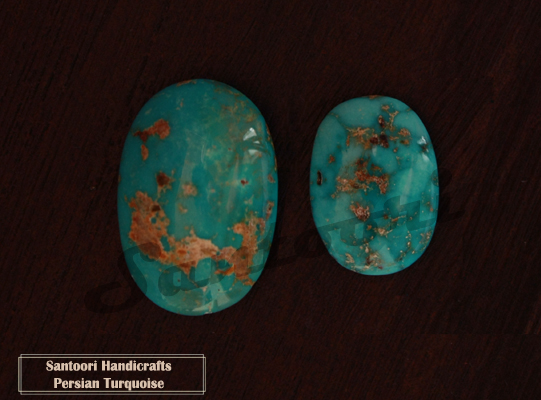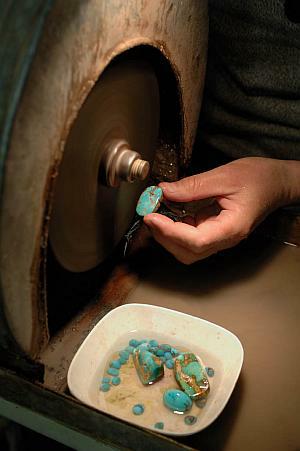An introduction to Persian Turquoise
Turquoise is among the oldest known gemstones, which graced the necks of Egyptian Pharaohs.
It has been mined since 3,200 BC. Historically turquoise was used for beads by the Egyptians
and combined with
other ornamental stones. It was inlaid in gold by
Sumerians and Egyptians to produce very sophisticated articles
of Jewelry.
|
Turquoise is an opaque, light to dark blue or
blue-green gem. The finest color is an intense blue.
This gem stone may contain narrow veins of other
materials either isolated or as a network. They are
usually black, brown, or yellowish-brown in color.
Known as the matrix, these veins of color are
sometimes in the form of an intricate pattern.
Persian turquoise which contains these veins is
called veined turquoise.
Persian turquoise is known as the jewel of the Orient due to its poperties. It is the finest and most intense blue turquoise in the world. This special gem stone was found for thousands of years in Persian and the term "Persian Turquoise" became synonymous with the finest quality. It came from several mines in today´s Iran. The stones from all mines show a great color variation. Many mines were worked around Nishapur, close to the old caravan routes. |
|
Due to persuasive evidence these mines were heavily
worked tat the beginning of the 10th century, but
there are also a few evidences that some of the
mines near the surface might be exploited as early
as 2100 B.C.
The
massive robin's egg blue Persian turquoise is used in making
jewelry and creating mosaics, inlays or overlays that have
adorned numerous monuments over the centuries. It takes a fine
polish and does not lose color with time. One of the historical
remarkable Tiaras was princess Margaret's Persian
Turquoise Tiara
often known as the Triumph of Love Tiara.
Turquoise is reputed to heal all kinds of ailments. New age
healers use it for the skeletal, digestive and respiratory
systems. It is said to help remove toxins from smoking and other
pollutants from the body. It is believed to bring inner
awareness, help strengthen friendships, aid those who have
trouble speaking in public, and improve empathy and honesty.
Persian Turquoise Types
|
Turquoise can also come in varying grades, with the
higher-quality generally being darker in color, harder
and with very little porosity. Often the stones of a
lighter color have a tendency to be softer and more
porous, and this may give them the potential to change
color with wear - however this is not always the case. |
 |
Always remember that the 'best' color of turquoise is largely a matter of personal choice. Most turquoise authorities in the world would agree that the ideal color for turquoise is a bold copper blue shade often called "Royal Blue". It is the most vivid and intense of all the pure blue turquoise shades. It is rare - some mines, even good mines, may never produce a single carat of it.
